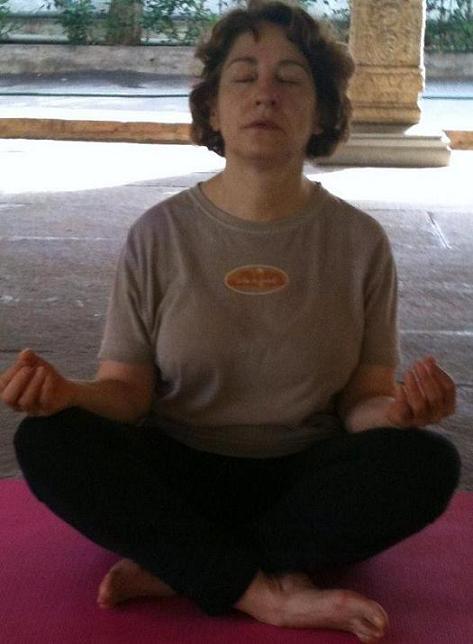Drat. Just sank $70 into a spiffy yoga mat, only to come across this story in the New York Times magazine. "How Yoga Can Wreck Your Body." Hey, my body is already wrecked; that's why I've been doing yoga!
The piece was hammered by critics who say its injury stats show yoga is much safer than other athletic pursuits. And the class is only as good as the teacher.
Here's the thing -- and I know my way around a yoga mat well enough to say this. Yoga is not a sport. It's a philosophy and lifestyle.
Done properly, it's more like meditation, due to the emphasis on breathing. Devotees and medical studies alike suggest it may help cut stress, depression, PTSD and blood pressure.
Along with back pain and osteoporosis. That's the theory behind the book Yoga for Osteoporosis,, penned in part by rehab specialist and HuffPost blogger Dr. Loren Fishman, whose studies are generating considerable interest.
When it comes to stress, have to say after a yoga class, I'm less inclined to want to fall headfirst into a hot-fudge sundae or get steamed standing in the supermarket checkout.
As for the problem of bad yoga instructors, I couldn't agree more. And glad the article was written, if for no other reason than to get novices to pay attention to the instruction. Because, as the article points out, in the wrong hands, you could be doing big damage to yourself.
Here's how to tell if if your teacher really knows downward-facing dog, or is simply a dog. (These are situations I encountered in one-size-fits-all group classes at a gym, as well as a hoity-toity yoga studio.)
1) If your instructor is more concerned with sporting cleavage than demonstrating the correct way to do a pose, uh-oh. The teacher is supposed to be concerned with your form, not his or hers.
2) If the teacher rattles off the names for every pose but never explains the philosophy behind them, don't be wowed. See above about showing off.
3) If the teacher wants you to do a shoulder or headstand 10 minutes into class, be very afraid. That would be like having a couch potato get up and run a marathon. Some yoga poses are so advanced, they have to be eased into.
Contrary to what some instructors and students think, yoga isn't aerobics. Or calisthenics. Even something as simple as posture and how you position your knees, feet and neck can spell the difference between helping and harming yourself.
For instance, a head or shoulder stand or the cobra position can be dangerous for folks with bad backs, neck strains or high blood pressure. That's where one-size-fits-all really gets dicey.
(And though some instructors know enough to caution everyone to "honor your body" because "it's not a contest," average folk like me aren't always sure when to stop. And teachers don't have the time to spot every person in the room.)
4) If a teacher wants to try some nifty new pose he or she just read about, don't fall for it. The teacher doesn't know any more than you do. Ditto for a teacher who invites someone to class who's just been to India and wants to show off a new move. And have everyone ape it -- without proper guidance.
5) Music is OK, but absolutely not necessary. Any teacher that's freaked because the CD player's not working doesn't get it, in my opinion.
To really learn the basics, do some research. (Yoga Journal and books like Fishman's
might be good places to begin.)
But know your physical limitations before you start. And if you do have some issues, I'd advise staying away from run-of-the-mill classes at your gym unless they're geared for certain conditions.
I have osteoporosis, and I have Fishman's book. While it's pretty straightforward and a good start, I don't feel it's a substitute for hands-on pointers from someone who knows anatomy and correct alignment. Someone who can tailor a program to your needs. Not everyone else's. Then, if you want to join the crowd, you can do it at your own, safe pace.
For more by Laura Lippstone, click here.
For more on yoga, click here.
